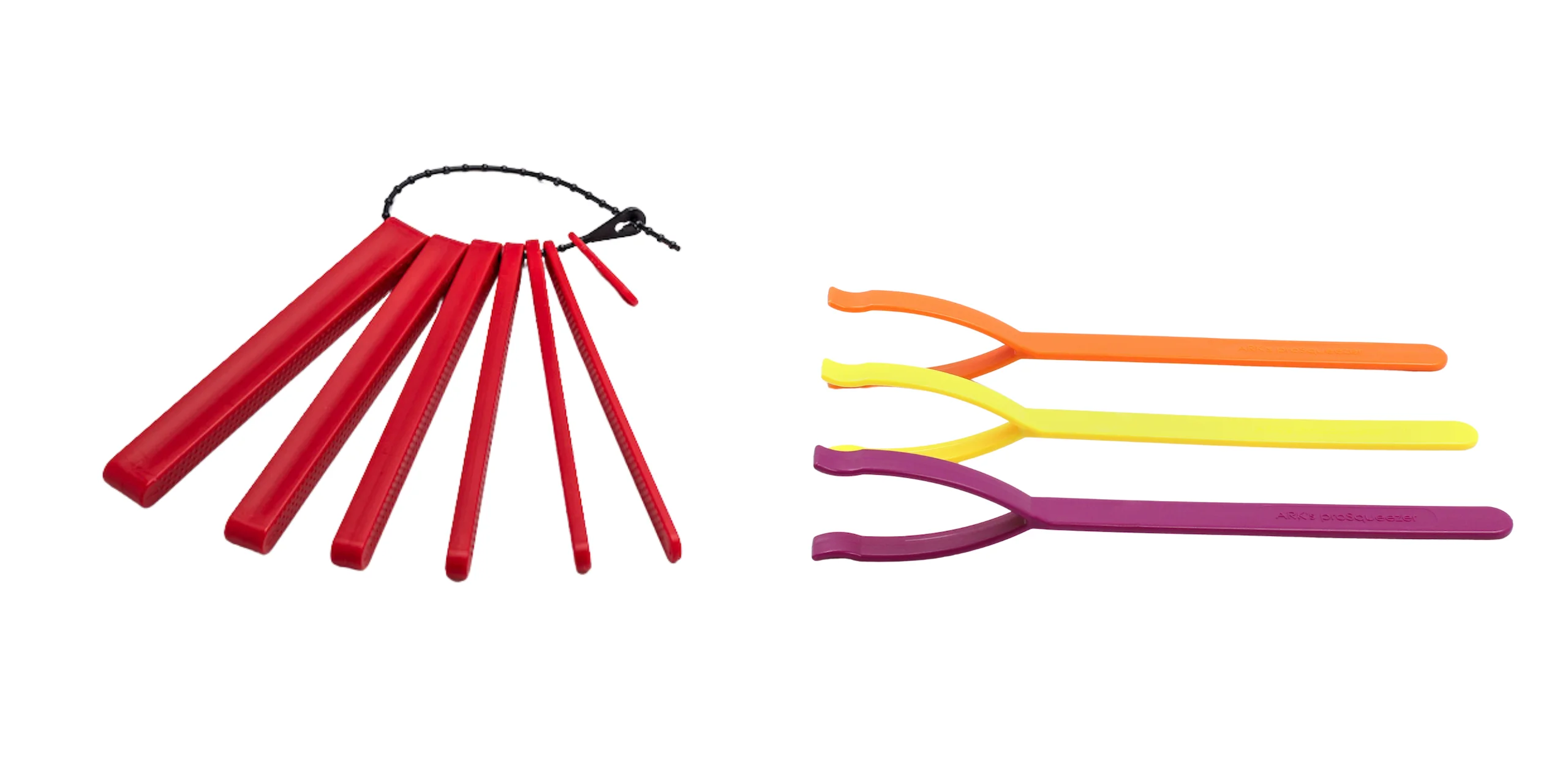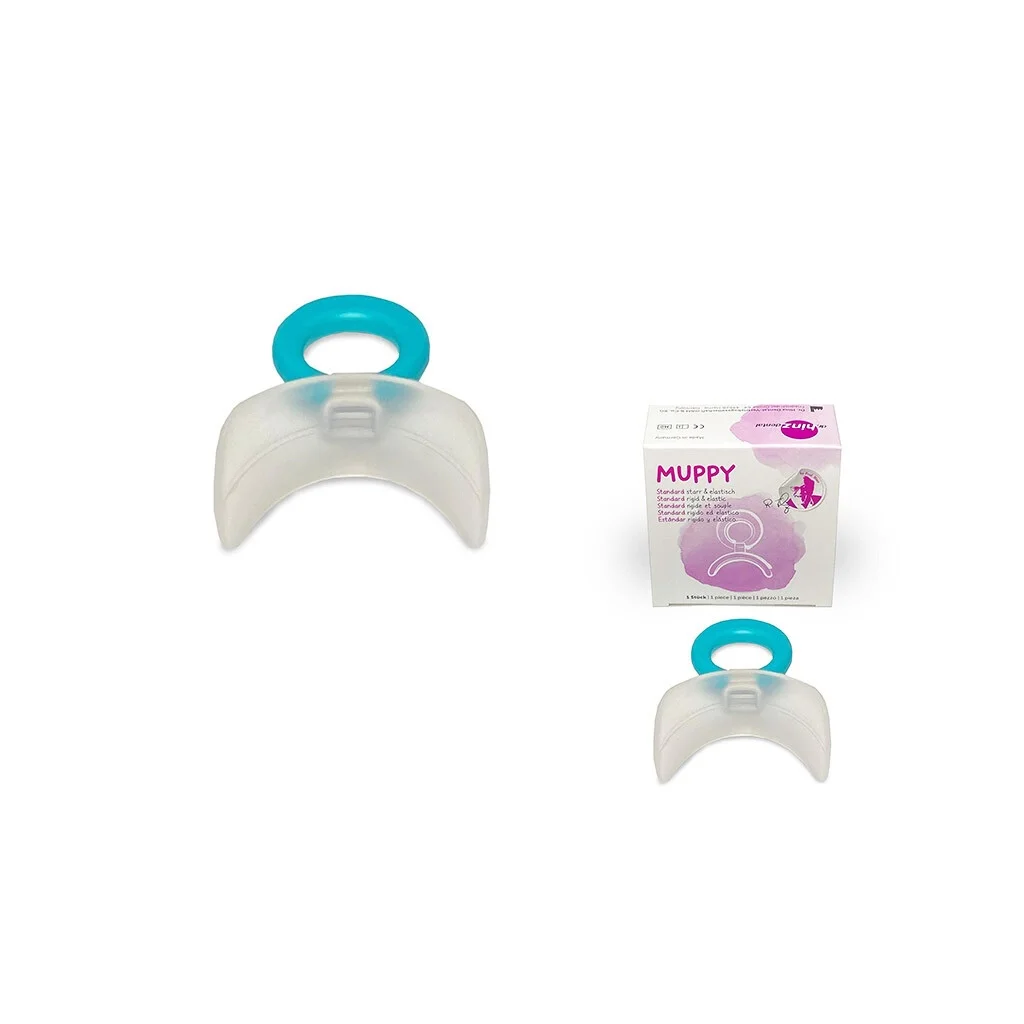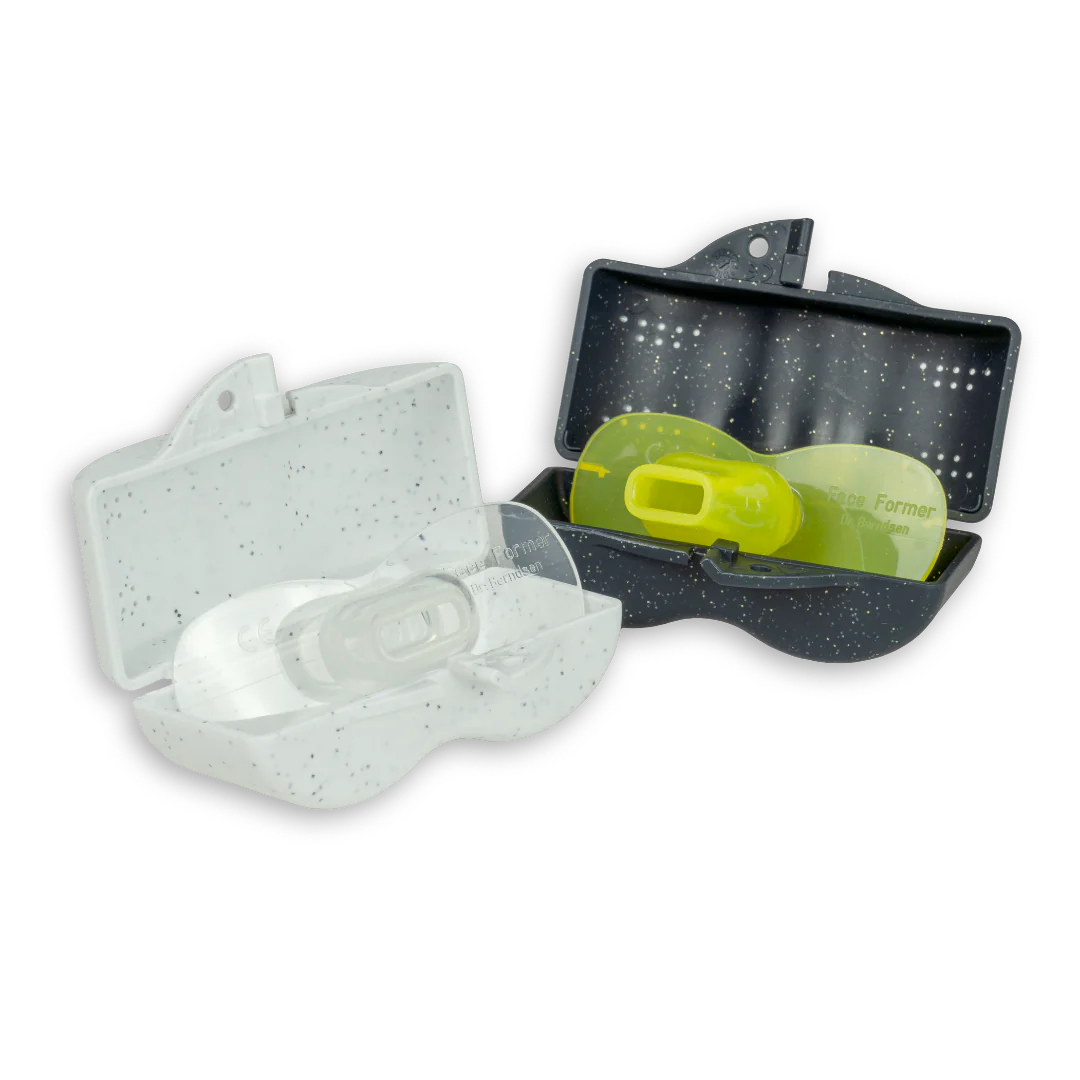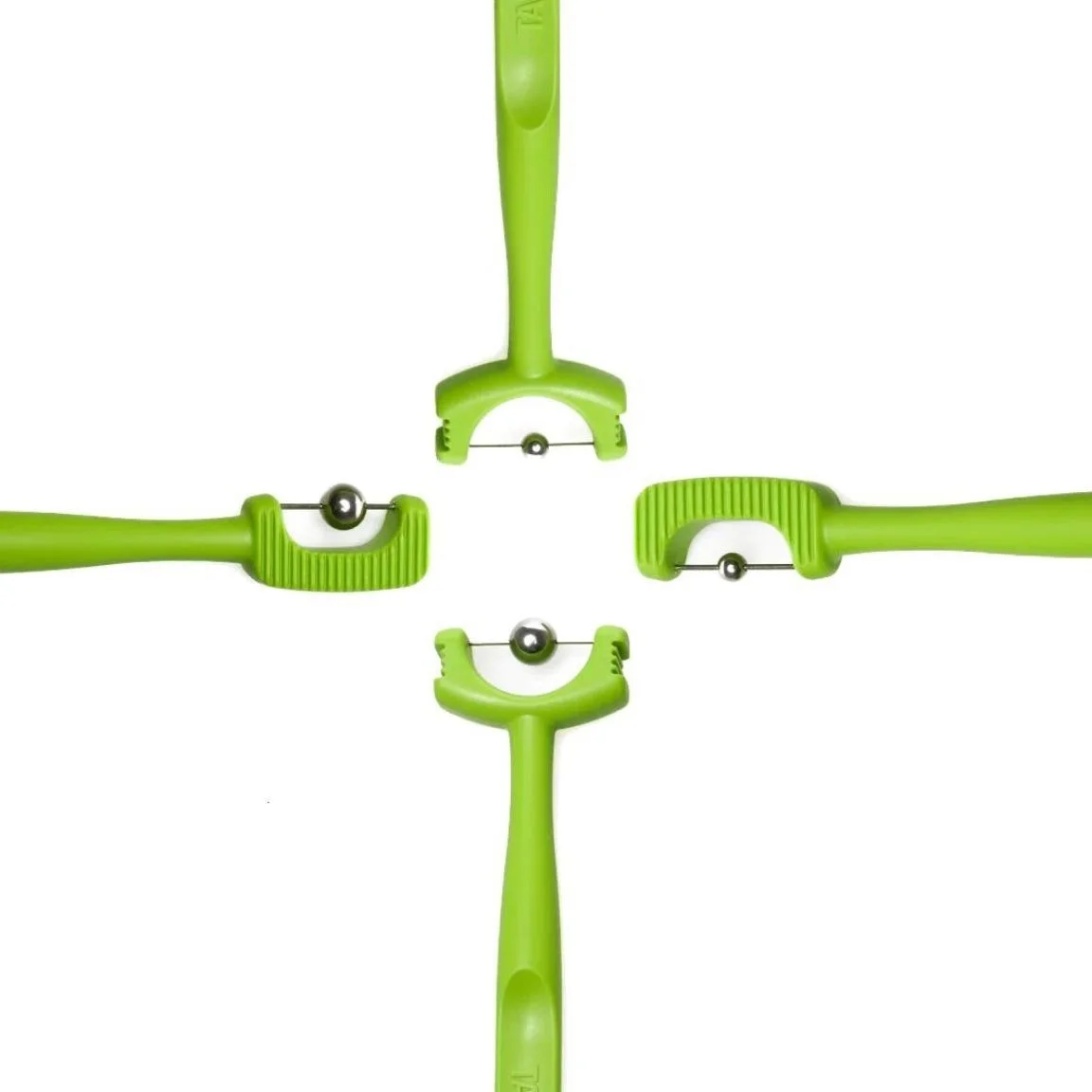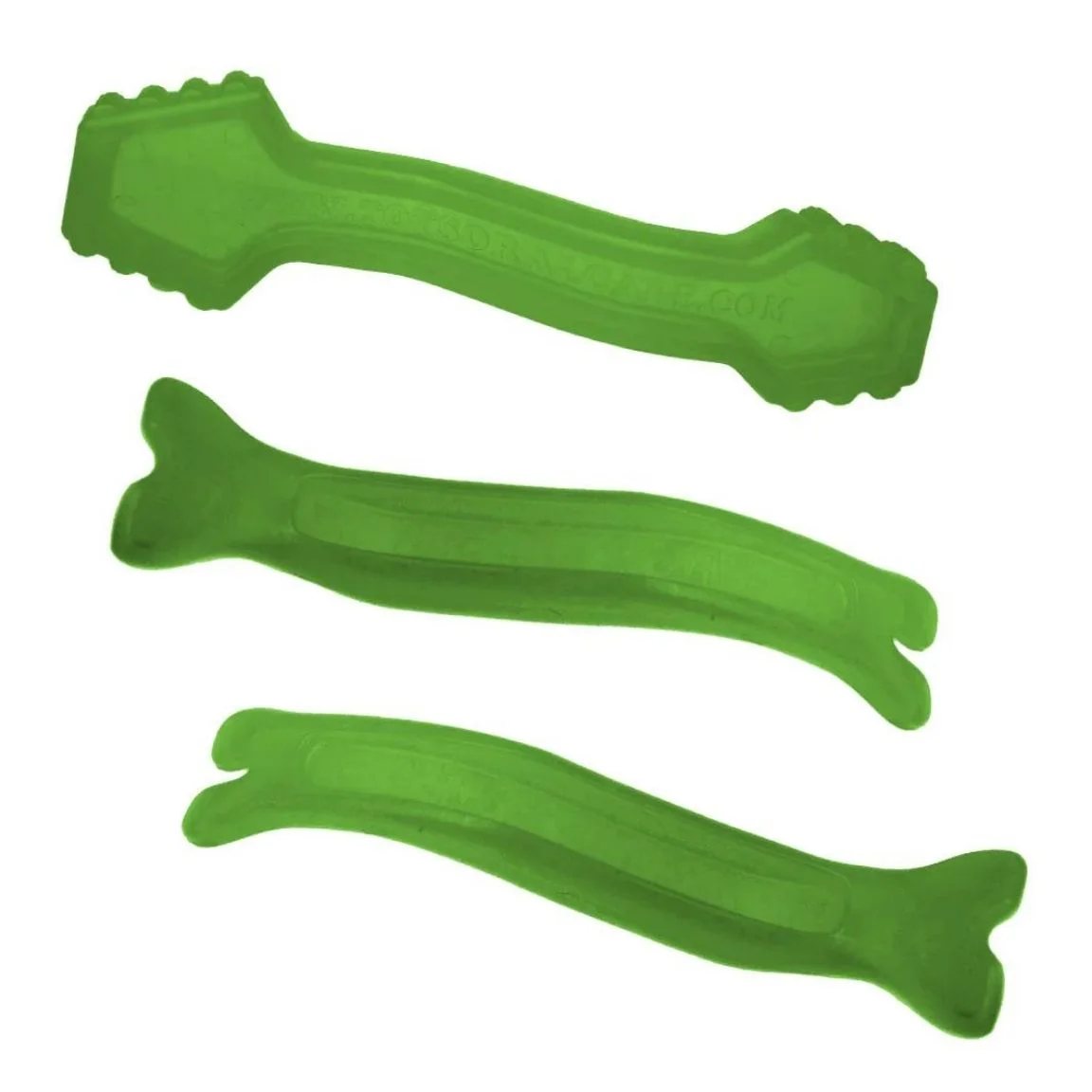Tongue rest posture & physiological swallowing
The correct tongue position and the physiological swallowing pattern are important for shaping the upper jaw and preventing the teeth from shifting.
Where should the tongue lie at rest?
The correct tongue position is completely in the palate. The tongue should touch the entire hard palate and also parts of the soft palate.
Why is the tongue not in the palate?
There can be many reasons why the tongue is not resting in the palate. It may be a habit, but it is also possible that blocked nasal breathing due to adenoids or hypertrophic tonsils (=large tonsils in the throat or palate), for example, leads to mouth breathing and therefore the tongue cannot be placed in the palate. A tongue tie that is too short can also be the cause of the tongue not being able to lie in the palate, or not sufficiently.
Is it bad if the tongue is not positioned in the palate?
An incorrect tongue position should always be treated. In addition to clarifying why the tongue is not in its correct position, it is recommended to work together with a speech therapist to avoid possible consequences. Misaligned teeth, mouth breathing and even postural problems can be avoided through early intervention.
What is the function of the correct tongue position?
The correct tongue position is important for shaping the upper jaw and keeps the airways open. Only when the tongue is gently sucked into the palate is it possible to breathe physiologically through the nose. Snoring and breathing interruptions during the night can be prevented in this way. If the tongue is not in the palate, this can lead to misaligned teeth and jaws, and children often suffer from recurring middle ear infections, as the tongue does not clean the Eustachian tube sufficiently and fluid cannot drain away.
Allergies and mouth breathing - what is the connection?
Allergies are often the cause of an obstructed airway; permanently runny noses sooner or later often lead to the habit of mouth breathing and thus also to an incorrect tongue position. It is therefore important to clarify and treat allergies.
